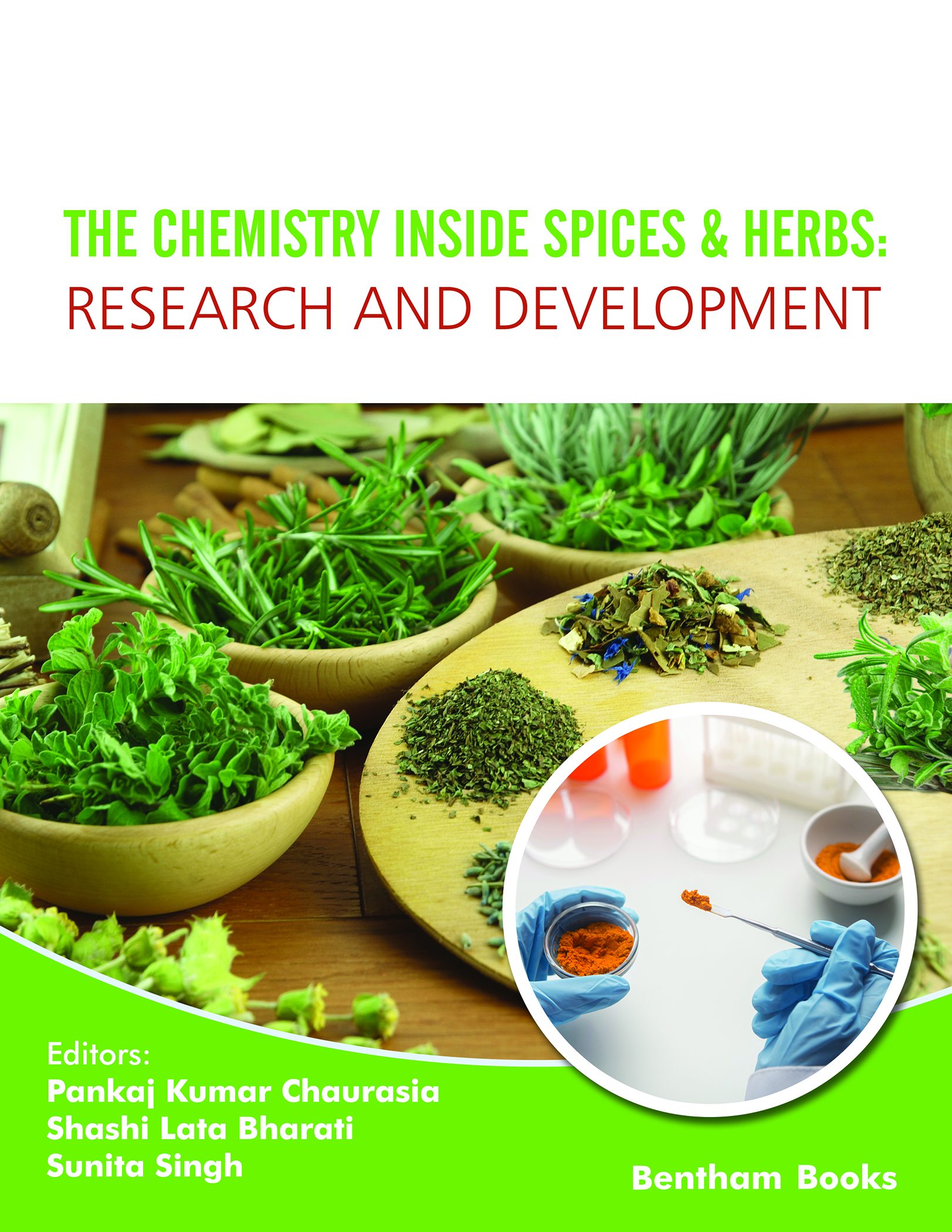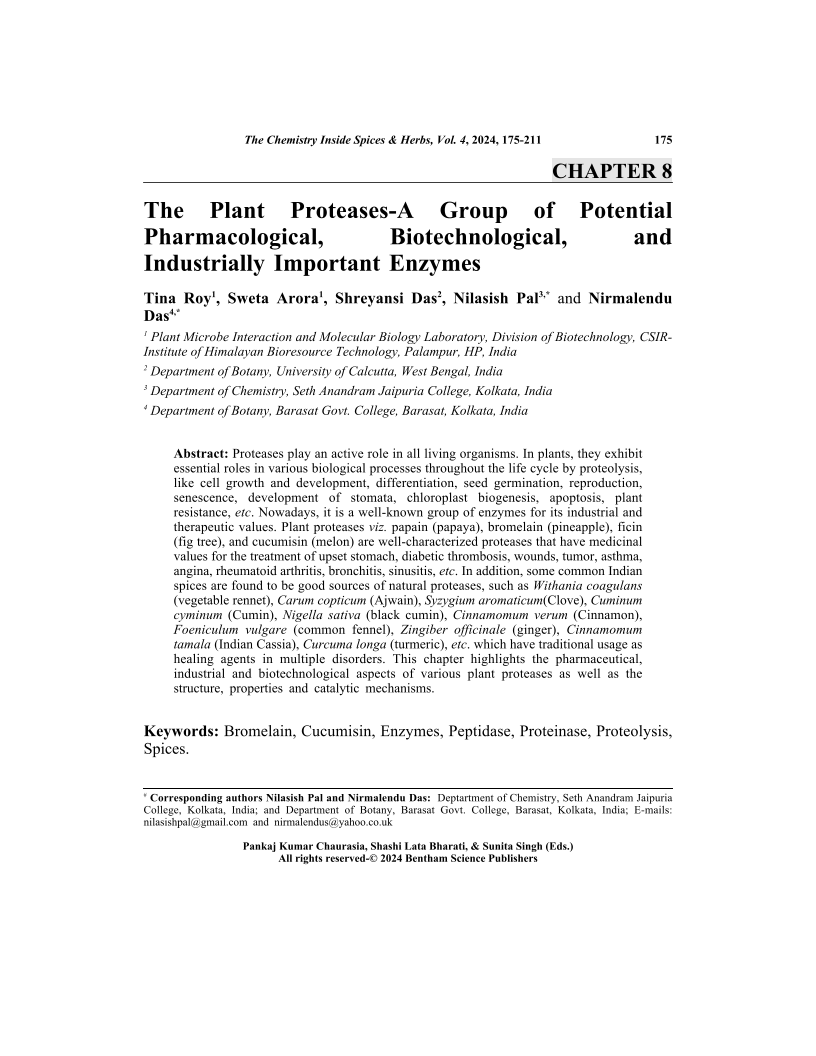The Plant Proteases-A Group of Potential Pharmacological, Biotechnological, and Industrially Important Enzymes

- Authors: Tina Roy1, Sweta Arora2, Shreyansi Das3, Nilasish Pal4, Nirmalendu Das5
-
View Affiliations Hide Affiliations1 Plant Microbe Interaction and Molecular Biology Laboratory, Division of Biotechnology, CSIRInstitute of Himalayan Bioresource Technology, Palampur, HP, India 2 Plant Microbe Interaction and Molecular Biology Laboratory, Division of Biotechnology, CSIRInstitute of Himalayan Bioresource Technology, Palampur, HP, India 3 Department of Botany, University of Calcutta, West Bengal, India 4 Department of Chemistry, Seth Anandram Jaipuria College, Kolkata, India 5 Department of Botany, Barasat Govt. College, Barasat, Kolkata, India
- Source: The Chemistry inside Spices & Herbs: Research and Development: Volume 4 , pp 175-211
- Publication Date: July 2024
- Language: English
The Plant Proteases-A Group of Potential Pharmacological, Biotechnological, and Industrially Important Enzymes, Page 1 of 1
< Previous page | Next page > /docserver/preview/fulltext/9789815196832/chapter-8-1.gif
Proteases play an active role in all living organisms. In plants, they exhibit essential roles in various biological processes throughout the life cycle by proteolysis, like cell growth and development, differentiation, seed germination, reproduction, senescence, development of stomata, chloroplast biogenesis, apoptosis, plant resistance, etc. Nowadays, it is a well-known group of enzymes for its industrial and therapeutic values. Plant proteases viz. papain (papaya), bromelain (pineapple), ficin (fig tree), and cucumisin (melon) are well-characterized proteases that have medicinal values for the treatment of upset stomach, diabetic thrombosis, wounds, tumor, asthma, angina, rheumatoid arthritis, bronchitis, sinusitis, etc. In addition, some common Indian spices are found to be good sources of natural proteases, such as Withania coagulans (vegetable rennet), Carum copticum (Ajwain), Syzygium aromaticum(Clove), Cuminum cyminum (Cumin), Nigella sativa (black cumin), Cinnamomum verum (Cinnamon), Foeniculum vulgare (common fennel), Zingiber officinale (ginger), Cinnamomum tamala (Indian Cassia), Curcuma longa (turmeric), etc. which have traditional usage as healing agents in multiple disorders. This chapter highlights the pharmaceutical, industrial and biotechnological aspects of various plant proteases as well as the structure, properties and catalytic mechanisms.
-
From This Site
/content/books/9789815196832.chapter-8dcterms_subject,pub_keyword-contentType:Journal -contentType:Figure -contentType:Table -contentType:SupplementaryData105

